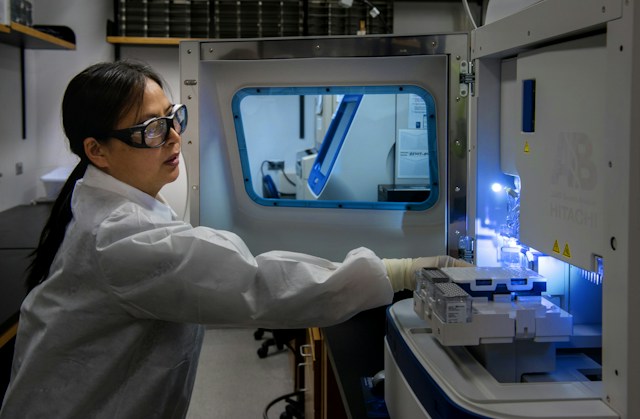Osha emergency eyewash and shower requirements are a set of regulations established by the Occupational Safety and Health Administration (OSHA) in the United States. These requirements mandate that workplaces where employees handle hazardous substances must provide and maintain emergency eyewash and shower equipment. The primary purpose is to ensure immediate access to these facilities in case of chemical splashes, foreign object contamination, or other incidents that could harm the eyes or skin of workers.
In today’s work environment, safety is paramount. Employers have a responsibility to protect their workers from potential hazards, and one crucial aspect of this responsibility is ensuring compliance with OSHA (Occupational Safety and Health Administration) regulations.

Osha emergency eyewash and shower requirements benefits
Prompt access to eyewash and shower equipment can minimize the severity of injuries in case of chemical exposures or accidents, reducing the risk of long-term harm.Compliance with OSHA regulations helps employers avoid penalties and legal liabilities associated with workplace safety violations. A safer work environment leads to higher employee morale and job satisfaction, contributing to overall productivity. Fewer workplace injuries and workers’ compensation claims can result in significant cost savings for employers over time. Many workplaces involve the handling of chemicals, substances, or materials that can pose risks to the eyes or skin if accidents occur. These hazards can result from chemical splashes, dust, foreign objects, or other unforeseen incidents. Immediate access to eyewash and shower facilities can significantly mitigate the consequences of such exposures. OSHA’s Stringent Requirements OSHA’s regulations for emergency eyewash and shower equipment are precise and stringent. They are designed to ensure that when accidents happen, appropriate and effective response measures are readily available. Employers must adhere to these standards, such as those outlined in 29 CFR 1910.151(c) and ANSI/ISEA Z358.1. Let’s explore the key requirements:

Design and installation if the equipment
Design and installation play a crucial role in ensuring the effectiveness of emergency eyewash and shower stations as per Osha emergency eyewash and shower requirements.
Here are the key aspects:
Safety equipment, like emergency showers and eyewash stations should be strategically placed throughout the workplace to minimize response time. They must be easily accessible, with unobstructed pathways. In the event of exposure to hazardous substances, workers should be able to reach these facilities within 10 seconds, a crucial factor in minimizing potential harm. The equipment’s ability to provide a continuous flow of tepid water is paramount. Tepid water refers to water with a temperature range of 60-100 degrees Fahrenheit (16-38 degrees Celsius). This temperature range ensures that the water is comfortable for extended use and does not cause further harm to the affected areas. Every component of the eyewash and shower equipment, including nozzles and valves, must meet OSHA’s durability and performance standards. This ensures that the equipment functions reliably when needed most. Routine inspections and maintenance are essential to uphold these standards and promptly address any issues that may arise. It’s also important to consider proper drainage to prevent the accumulation of contaminated water in the workplace. This not only helps maintain a clean and safe environment but also ensures that the eyewash and shower facilities remain effective. Read more at Giapremix.fi.
Maintenance of the emergency eyewash and showers
They are crucial aspects of ensuring that emergency eyewash and shower equipment remains reliable and effective in responding to workplace emergencies, in line with OSHA requirements.
Employers bear the responsibility of maintaining these vital safety installations in working order. Regular inspections and testing routines are mandatory to guarantee their functionality. One fundamental testing requirement is the activation of eyewash stations on a weekly basis. This practice serves to confirm that the equipment is ready for immediate use when needed most. It ensures that water flows freely and that the nozzles deliver an adequate stream to thoroughly flush affected areas. In addition to weekly testing, an annual comprehensive inspection is mandatory. During this inspection, all components are thoroughly checked to ensure they meet OSHA’s durability and performance standards. This includes verifying the proper water temperature within the tepid water range of 60-100°F (16-38°C) and confirming the correct flow rate. Regular maintenance and testing routines not only ensure compliance with OSHA regulations but also contribute to workplace safety. They provide the assurance that emergency eyewash and shower facilities will function as intended during critical moments, minimizing the potential harm to employees in the event of exposure to hazardous substances.
Employee training
This is a vital component of OSHA emergency eyewash and shower requirements, ensuring that workers are not only aware of the equipment’s location but also capable of using it effectively in the event of an emergency.
Employers have a responsibility to provide training to their employees regarding the location of eyewash and shower facilities within the workplace. This knowledge is crucial as it ensures that workers can quickly access these critical resources when a hazardous incident occurs. However, training should extend beyond mere awareness of location. Employees must also be educated on the proper use of eyewash and shower equipment. This includes understanding how to activate the equipment, how to position themselves to rinse their eyes or skin thoroughly, and how to use the equipment safely and effectively. Furthermore, training programs should emphasize the importance of promptly reporting any incidents or equipment malfunctions. Quick reporting ensures that appropriate action can be taken to address the situation, whether it involves providing medical attention to an affected employee or repairing a malfunctioning eyewash station.
Compliance with the OSHA requirements
Compliance with Osha emergency eyewash and shower requirements offers a multitude of benefits, extending far beyond mere regulatory adherence. These benefits are instrumental in fostering a safer and more secure work environment:
Swift access to eyewash and shower equipment can make a critical difference in minimizing injuries. In many cases, immediate use of these facilities can prevent minor incidents from escalating into severe injuries, thus reducing both the severity and extent of harm to employees. Compliance with OSHA regulations serves as a protective shield for employers. It helps shield them from legal liabilities and potential fines associated with workplace injuries. By adhering to these requirements, employers demonstrate their commitment to employee safety and minimize the risk of legal consequences. A safe and supportive work environment significantly contributes to elevated employee morale and job satisfaction. When workers feel secure and confident that their well-being is a priority, they are more engaged, motivated, and committed to their roles. Fewer accidents and injuries directly correlate with reduced workers’ compensation claims. This reduction translates into potential cost savings for employers, as they bear fewer financial burdens associated with compensation, medical bills, and potential legal disputes.
Want to read more on the topic emergency equipment? Please visit www.nordicinformer.com/combination-shower-and-eye-wash-stations/



